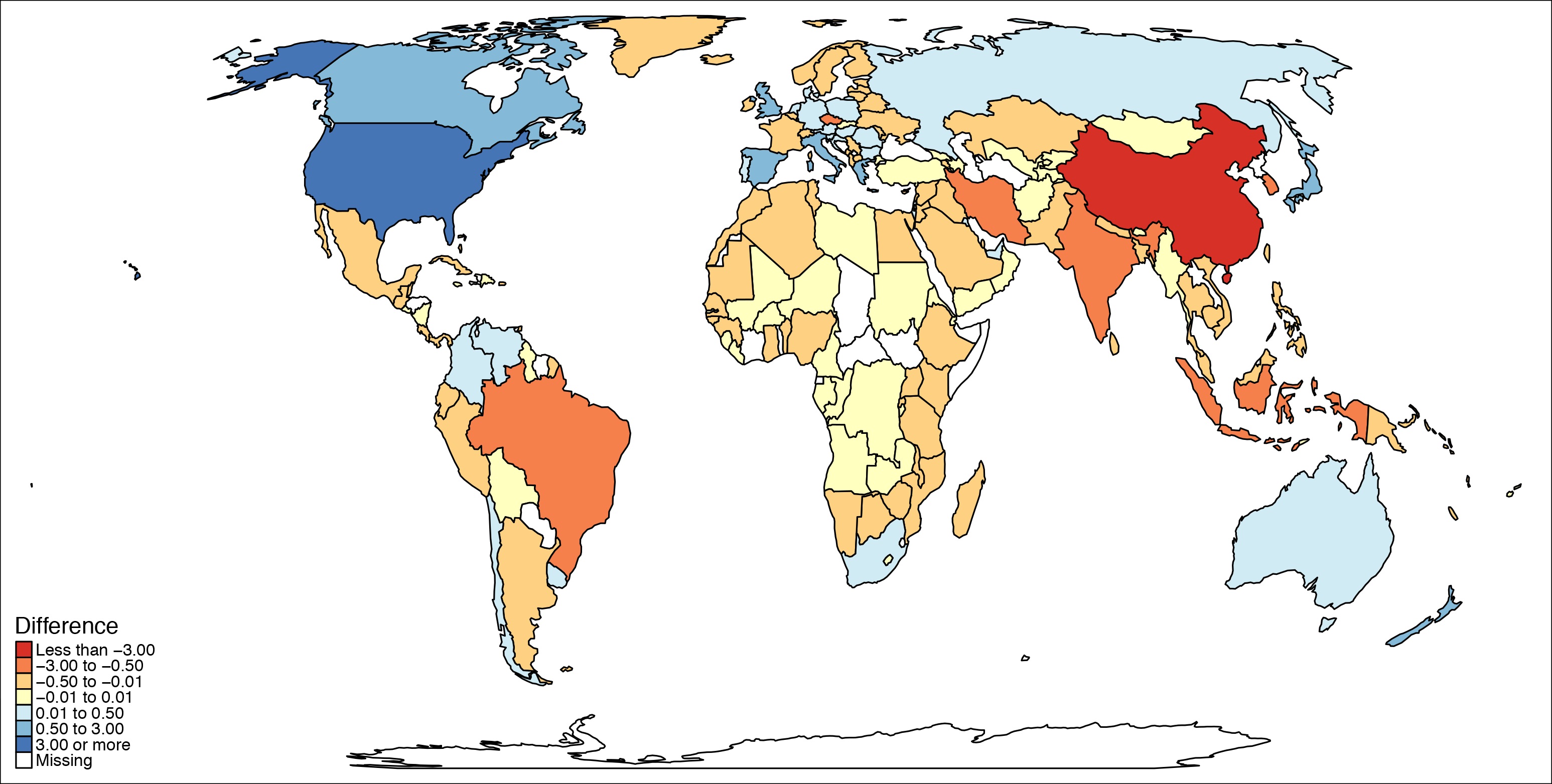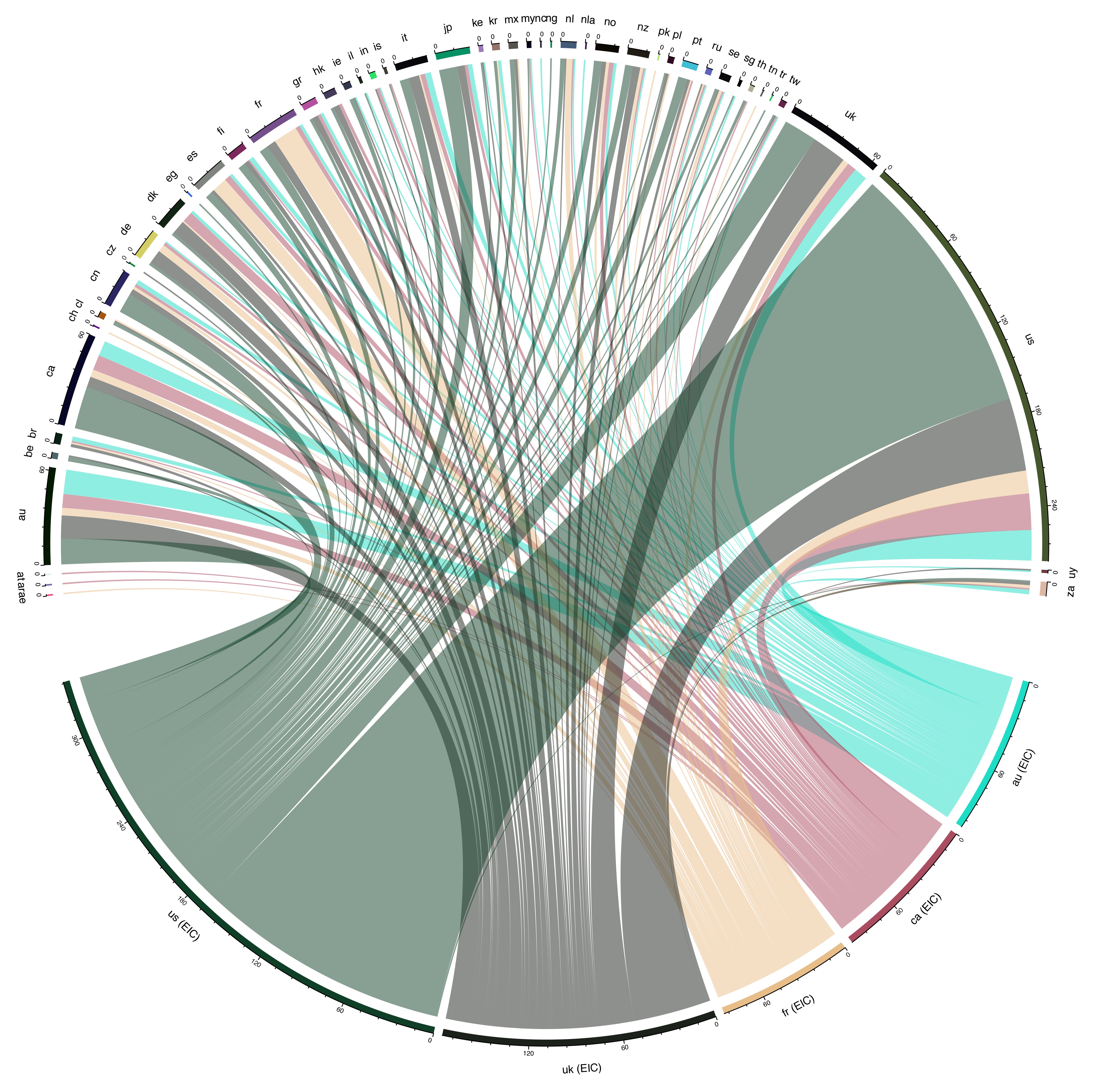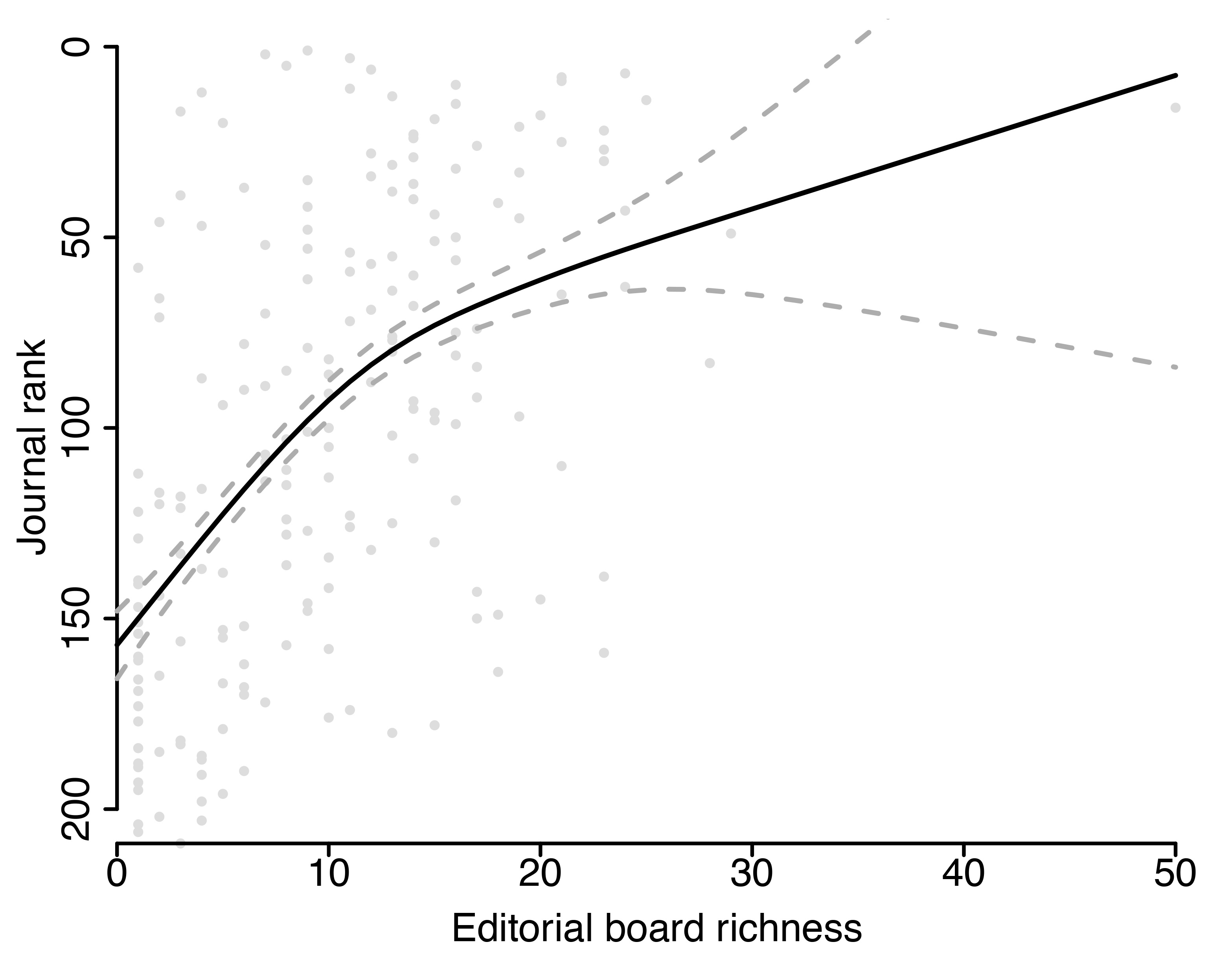Introduction
Poor gender representation has been identified as commonplace in the authorship of papers across scientific fields. In spite of the association of gender diversity with positive outcomes in the workplace—and its links to creativity and impact—it is widely reported that the fields of science, technology, engineering, and mathematics (STEM) are traditionally male dominated.1,2 In the winter 2018 edition of Science Editor, Rivera Mindt and coauthors concluded, in a case study involving the journal The Clinical Neuropsychologist, that reaching out and keeping a commitment to diversity are strategies worth pursuing to diversify the editorial process and science as a whole.3 However, issues related to underrepresentation can also involve geography, and by extension, culture. In keeping with the 2019 CSE Annual Meeting theme of “inclusion, identity, technology, and beyond,” we wanted to explore geographical and cultural representation in the editorial boards of a field of science that is inherently global (aquatic science). We aimed to explore (1) what is the cultural and geographical distribution and behavior of editorial boards across all titles listed in the Scimago subject category “Aquatic Science,” (2) whether there is a relationship between editorial board composition and scientific output in terms of geographical and cultural representation, and (3) whether journals with higher editorial board richness benefit in terms of measurable outcomes, such as journal rank.
Approach
We downloaded the list of all journals from 2017 for the subject category “Aquatic Science” in Scimago’s Journal & Country Rank database (n = 217), and then recorded all editors listed on those journals’ editorial board web pages (n = 6248 editors recorded). The data we recorded included names, countries of institutional affiliation, and editor titles, and we also paired each editor’s country with its appropriate cultural sphere following world divisions of cultural geography (see the “Cultural Geography” page on Wikipedia).4 We also recorded information about the journals (name, publisher, country of incorporation, Scimago Journal Rank).
Geographical Distribution and the Cultural Behavior of Editorial Boards
We found most aquatic science journals have editorial boards with fewer than 40 editors. There are titles with editors numbering in the hundreds, but that is not the norm. Cross-checking names and institutional affiliations, we found out that most editors serve exclusively on one board, with 10% of the editor population serving on multiple boards. The majority of multiboard appointees serve on two boards. Occasionally, editors serve on three or more boards, with one individual actively sitting on six boards.
Journal titles were registered primarily in the United Kingdom, United States, the Netherlands, and Germany, and were published predominantly by Elsevier, Springer, Wiley, and Taylor & Francis. All titles in the subject category were published in English. In a few cases, titles were published in a language other than English, but English also was offered as an option for publication. The majority of editors were affiliated with institutions in the United States, United Kingdom, China, Canada, and Australia. Most scientific output (defined as the number of citable documents per calendar year) by country was produced by (top five countries): the United States, China, United Kingdom, Australia, and Canada.
Our next step was to group all nations represented in the database based on their cultural geography. In this regard, we wanted to know if there was correspondence between the cultural sphere of journal countries when compared to (1) the cultural sphere of the editorial population, and (2) the cultural sphere of scientific output. We suspected that a journal published in a Western nation might contain an editorial board that is predominantly Western, and that the majority of science output also was emanating from the Western sphere. By comparing the proportions resulting from the data, we found that, as expected, 75% of aquatic science journals are published by organizations in the Western sphere, and this sphere also contained the bulk of editors (71%) and scientific output (60%). In order of importance, next was the Latin American sphere (7% of journals published, 6% of the editor population, 9% of scientific output), and the Eastern and Japonic-Korean spheres (5% of journals published each; 4% and 6% of editor population, respectively; 3% and 5% of scientific output, respectively).
Editorial Board Composition and Scientific Output
In spite of the parity exposed by the cultural geography exploration, when we drilled down to country and considered how the near-equal proportions shown in the cultural spheres’ comparisons were expressed on a per nation basis, the data revealed some interesting trends. If we subtracted the percentage of a country’s share of scientific output from the percentage of a country’s share of editors, it turns out many countries are revealed as overrepresented on editorial boards—this means the percentage of editors based on these nations is higher than the corresponding percentage of scientific output for that nation. We call this the “editorial surplus” and it is most prevalent in the United States (see Fig. 1). On the flip side, many countries are underrepresented, with China as the top country in having an “editorial deficit.”

Interestingly, the question of being in an editorial surplus or deficit goes beyond cultural sphere. For instance, nations in the dominant Western sphere can also be underrepresented on editorial boards (e.g., France, Belgium, Czech Republic, Ireland, Sweden, Norway, Finland); and some nations in other cultural spheres can have an editorial surplus (e.g., Colombia, Venezuela, Chile, and Uruguay, all part of the Latin American sphere; Russia and Romania, Eastern sphere). Many countries in the Global South, particularly in Africa, have low editorial representation, but also low scientific output.
So, why is the United States in editorial surplus and China in editorial deficit? What is causing this disparity? To answer these questions, we looked at every journal to see the geographical relationship between their editors-in-chief (EICs)5 vis-à-vis their editorial board members.6 What we found is that the collective of EICs based in US institutions mostly oversees editors at other US institutions, or in institutions in other Western sphere countries (United Kingdom, Canada, Australia, France; see Fig. 2).

The data also show that US EICs oversee board members in many nations (49 total), but these individuals, even if combined, are dwarfed compared to the number of US-based editors. Other Western nations have similar patterns (for example, France) in which their EICs mostly oversee board members from their home country, and then from other nations; yet the majority of editorial board members belong to their own cultural sphere. An interesting twist is demonstrated by nations such as the United Kingdom, Canada, and Australia; their EICs are overseeing mainly US-based editors, followed by editors in their home country, and then by editors in other countries within their own cultural sphere. In short, the abundance of US editors on boards is caused by US-affiliated EICs often selecting (or overseeing) largely US editorial board members. The situation is exacerbated by other nations that also favor the appointment of US-based editors to their boards. For China, the country with the largest editorial deficit, most Chinese-based editors are appointed by US EICs. In addition to the United States and China, EICs from other countries appoint Chinese editors, but in fewer numbers.
Editorial Board Richness and Journal Rank
In spite of the benefits associated with inclusion and diversity, we wanted to explore if there are additional advantages to having a geographically diverse editorial board, such as having a relationship with measurable journal outcomes. Since our data set was extracted from Scimago, we examined the relationship between Scimago journal rank and editorial board richness using a generalized additive model. What we found is that a geographically diverse editorial board might have a positive effect on journal rank (Fig. 3). There was a significant correlation between higher geographic representation on a board and better journal ranking.

While richness—defined as the total number of countries represented on a board—is the metric we analyzed statistically, we also were interested in diversity. The diversity metric we investigated not only accounts for the number of countries represented, but also how their representation is proportioned. For example, a journal with 20 American editors and 20 editors from 20 other countries is not as diverse as a journal with 40 editors from 20 different countries (divided equally). Regrettably, we found that diversity is not common in aquatic science. While there might be benefits associated with a diverse editorial board, the field of aquatic science has few highly diverse boards with a considerable number of titles containing board members mostly from the country in which the title is published or, by extension, from the institutional country of the EIC.
What We Found
Our results indicate that editors of the Western cultural sphere, mainly the United States, dominate the editorial boards of aquatic science journals. US-affiliated chief editors are often selecting (or overseeing) largely US editorial board members. The Western sphere is also where the majority of journals in aquatic science are published, and it also dominates scientific output in this field.
Many countries in the Western cultural sphere—especially the United States, Canada, and the United Kingdom—have greater shares of editorial board appointees relative to their share of scientific output (“editorial surplus”), leaving countries such as China, Brazil, and India with an “editorial deficit.”
For the subject field of aquatic science, we found that editorial board geographic representation is favorably related to journal ranking. On average, the more geographic representation on the editorial board, the better the journal ranking. However, few journals in this subject field have highly diverse editorial boards. We believe this needs further exploration in other fields, and our results suggest that journals should be encouraged to adopt more culturally and geographically diverse editorial board.
References and Links
- Espin J, Palmas S, Carrasco-Rueda F, et al. A persistent lack of international representation on editorial boards in environmental biology. PLoS Biol 2017;15(12):e2002760, https://doi.org/10.1371/journal.pbio.2002760.
- Manlove KR, Belou RM. Authors and editors assort on gender and geography in high-rank ecological publications. PLoS ONE 2018;13(2):e0192481, https://doi.org/10.1371/journal.pone.0192481.
- Rivera Mindt M, Hilsabeck RC, Olsej JP, Savin MJ, Crook CL, Suchy Y. Advancing science through diversity and inclusion in the editorial process: A case study. Science Editor. 2018;41(3):93–96.
- https://en.wikipedia.org/wiki/Cultural_geography
- Journals call their top editors by different names; for simplicity, we have grouped them as editors-in-chief.
- We cannot be certain if these EICs appointed their board, inherited their board, or are in any way responsible for the composition of the board. However, we made the assumption that in all cases they oversee their boards irrespective of how the composition of the board was formed in the first place.
Rafael Araújo is Managing Editor and Geoffrey Shideler is Assistant Editor of the Bulletin of Marine Science, a journal published by the Rosenstiel School of Marine & Atmospheric Science of the University of Miami, Miami, Florida.
